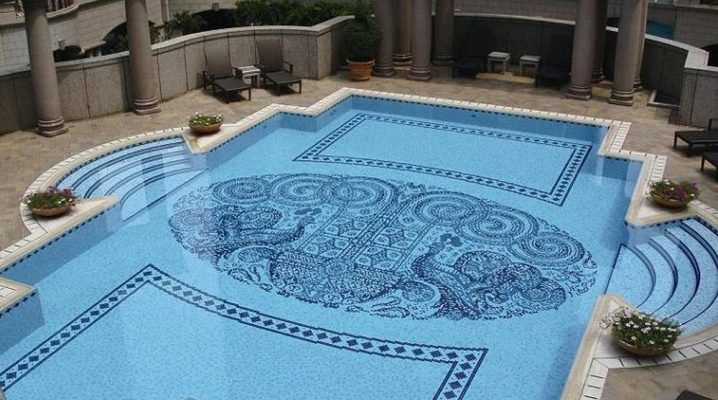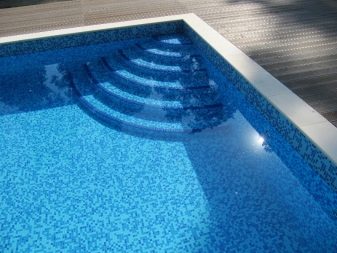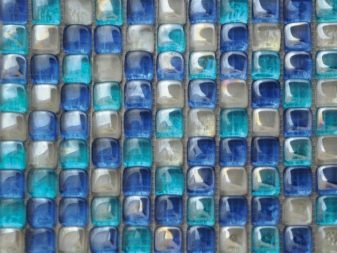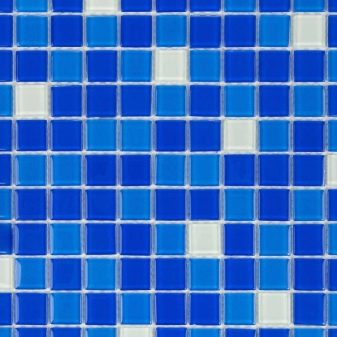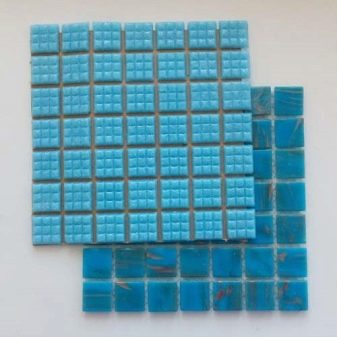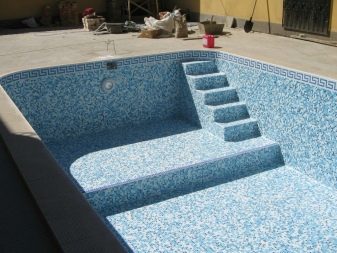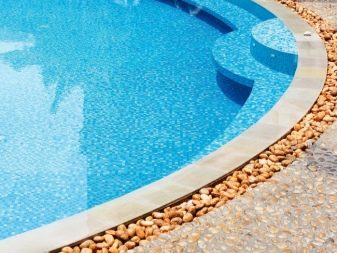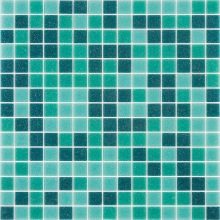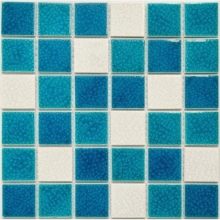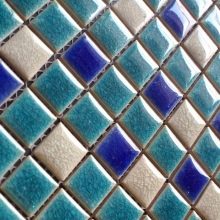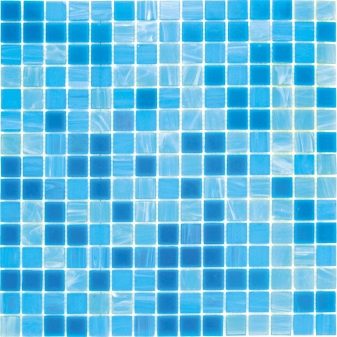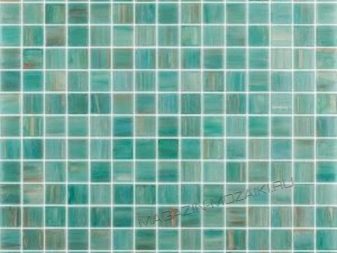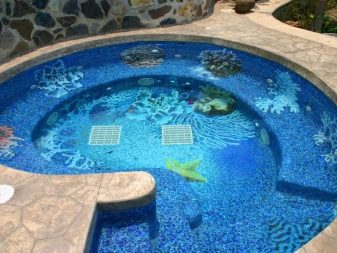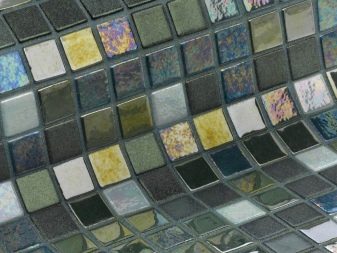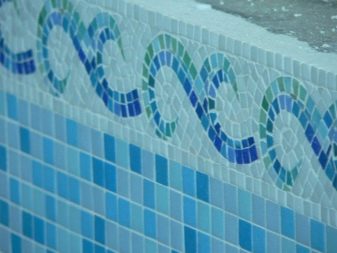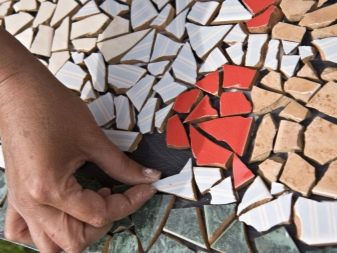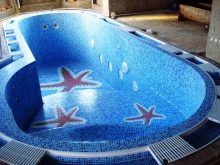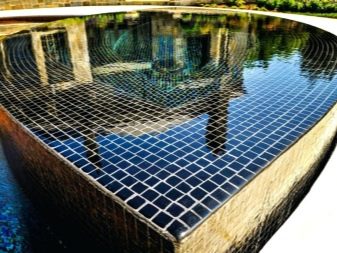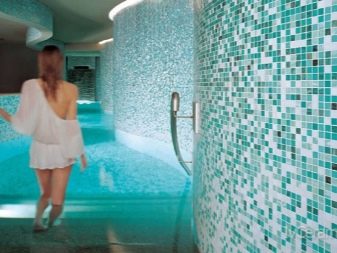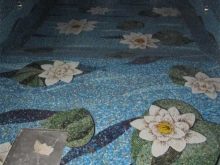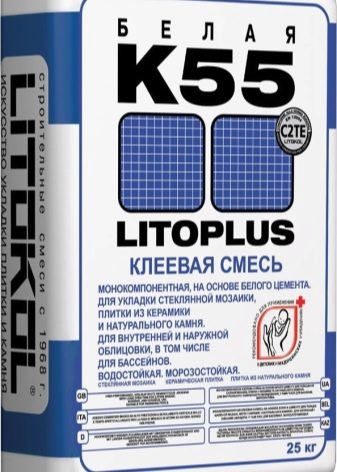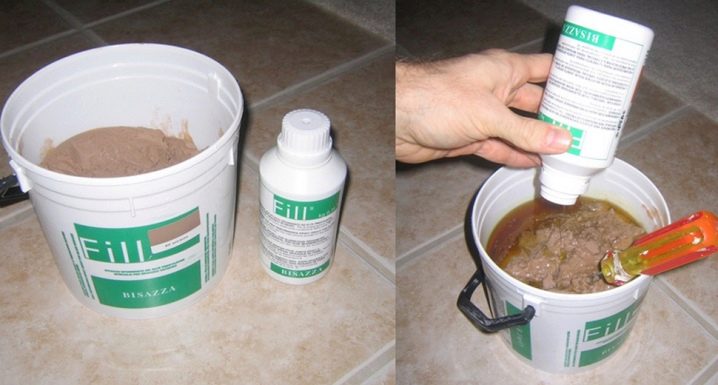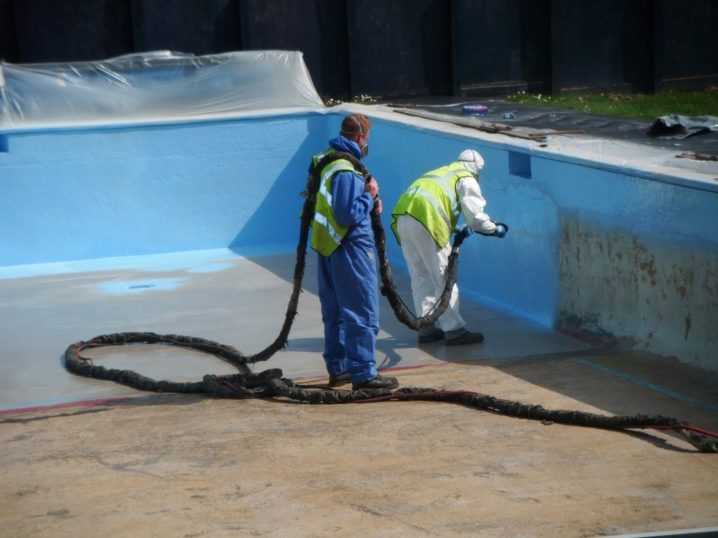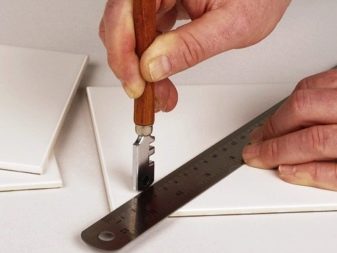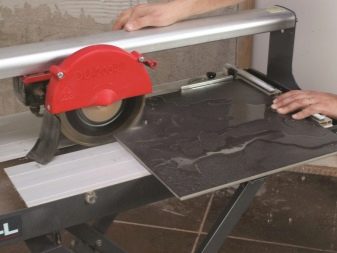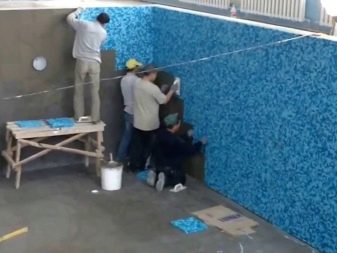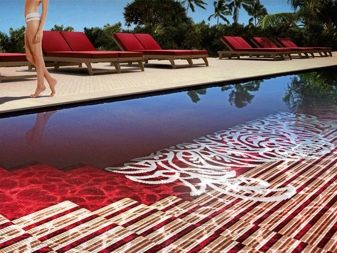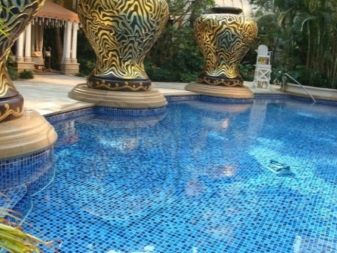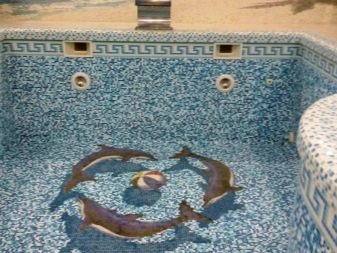Mosaic for the pool: features of choice
Materials for finishing the pool should have minimal water absorption, transfer water pressure, exposure to chlorine and other reagents, temperature drops. That is why tile or mosaic is used to decorate the bowl and adjacent areas, fixing them on a special waterproof glue.
Mosaic can be laid on the bottom and walls of the pool, as well as on the sides and steps, the surface around the tank.
Special features
Mosaic is a cloth fastened together elements. Decorative particles are mounted on a flexible substrate, so that the mosaic can be used even on uneven surfaces. In addition, even with a dense tile laying it is impossible to achieve the same tightness and maximum fit, which gives the use of mosaic on the substrate.
The advantage of mosaic coating is increased durability.that is due to the production technology. The material is hardened at high temperatures, it can be based on heavy-duty glass. This allows you to use the mosaic not only for the design of the inner surface of the tank, but also as a floor covering next to it.
Mosaic for the pool should have a moisture absorption coefficient of not more than 6%. Otherwise, the material will retain moisture, which will quickly lead to its fragility.
Kinds
Depending on the material used, the mosaic surface can have one or another appearance, have different characteristics, and, therefore, the scope of use.
There are several types of coatings for the pool.
- Ceramic mosaic. It is based on highly plastic clay and additives. The raw materials are extruded and pressed, after which they are fired at high temperatures. Characterized by strength, resistance to temperature extremes and high humidity (moisture absorption is only 0.5%). In addition, this mosaic is even resistant to aggressive cleaning products, therefore it is often used as a floor covering.
- Porcelain ceramics. In its composition, it is similar to porcelain. It is based on white clay, quartz, feldspars, and metal oxides to impart color to the finished product. Thanks to the technology of high-temperature firing, porcelain ceramic mosaic has a solid, glass-like surface. As a rule, it is not covered with icing.
- Glass mosaic on the grid. It resembles ceramic tiles, but its difference is the refraction of light, which results in interesting optical effects. There is a mirror version of the glass surface, which is also characterized by durability, ability to self-cleaning.
It is the most popular cladding material, since its water absorption is almost 0%. This allows the tile to not accumulate moisture even if its surface is damaged. In addition, it is suitable for finishing outdoor pools, cold resistance - up to 100 cycles. Especially popular is the Chinese mosaic, which demonstrates the optimal ratio of price and quality.
- Concrete mosaic tile. It is based on concrete with coloring pigments, which explains the increased strength of the material.However, despite the great strength (according to this indicator, it even “overtakes” clinker), the material is rarely used to design pools. This is due to its rudeness and roughness.
- Metallic. It is a thin metal plate attached to the base. They undergo a special anti-corrosion finish, therefore, are characterized by durability even in conditions of high humidity. However, the material is not suitable for outdoor use and interior lining of the pool.
- Broken ceramics. It has the same operational characteristics as the ceramic analog, but is distinguished by the presence of a multitude of pebbles. The latter have uneven faces and differences in pigmentation, which, when refracted by sunlight, provides a mirror effect.
Along with the ceramic mosaic, its broken version is widely used for finishing the pools and adjacent territories.
Colors and texture
When choosing a panel for the outdoor pool should be preferred frost-resistant materials. For registration steps, walking zone should choose unglazed material with a high slip coefficient. The higher the last value, the safer the surface.It is optimal if the coefficient of friction is from 0.75.
Class B and C materials are suitable. Materials of the first type are designed specifically for installation in swimming pools and showers, the latter demonstrate the maximum anti-slip performance.
The best options for cladding are unglazed clinker, porcelain stoneware and glass mosaic. Making natural stones is unjustified, because under water is lost the attractiveness and luxury of the material, and he looks dull and monotonous. A clinker version is used for facing surfaces near the pool, and a mirror or smooth mosaic is used to finish the underwater surface.
In addition, the use of a light shade of a mosaic or a mirror version makes it easier to visually assess the purity of the water, allowing you to notice foreign objects in a tank in a timely manner. It is believed that dark, unnecessarily bright, acidic shades are depressing, while the pool is still a place to relax.
Experts recommend to opt for a mosaic of soothing pastel shades (beige, sandy, milky) or colors close to shades of sea wave (blue, blue, turquoise).Quite often, the side walls of the bowl are made out of horizontal stripes of the same color, but of different shades. If you use the strip of the same width, you can easily control the water level in the pool.
If the bottom and walls have a lot of uneven sections, you should choose a mosaic with small elements, it is more flexible. At the same time, if some part of the mosaic is damaged, it can be easily replaced.
If a complex panel is intended, then the fragments should also be small, better square ones. Mosaic, protruding edges of which have roundings, is safe. That it should be chosen for the surfaces on which to go.
What is required for styling?
Choosing a mosaic, you should take care of a suitable tile adhesive. It should have such characteristics as water and frost resistance, have good elasticity and adhesion, resistance to the effects of mold and fungus, chemical reagents, primarily chlorine.
As a rule, adhesive compositions for fixing mosaics in high-humidity rooms are marked “for the pool” or “aqua”.High-quality glue contains cement mixes, and mixes for grouting - epoxy resins.
It is worth noting that they can not be called cheap, however, the higher price is fully justified by the best technical characteristics. We must not forget that saving on glue, you can lose even the most expensive and high-quality finishes.
In addition to the mosaic and glue, you need to take care of waterproofing the tank.
For this purpose several compositions may be used.
- A mixture of penetrating action - after penetration into the pores and cracks of the material such compositions crystallize, which ensures the tightness of the surface.
- Polymer cement mixtures - compositions for coating waterproofing based on cement and plasticizers.
- Mastic on the basis of liquid rubber, on top of which the reinforcing fabric is laid.
Undoubtedly, in the process of work you will encounter the need to cut a fragment. It is not recommended to use nippers as it is possible to damage the material, to get broken, uneven edges. For cutting it is recommended to get a tile cutter or a glass cutter.
Calculation of materials
To determine the required number of mosaics, it is necessary to calculate the area of the tank, and add another 10-15% of the material to the result obtained.
Calculate the required amount of glue can, depending on the area of the pool and the material consumption per 1 square. m The latter is indicated on the glue package. As a rule, it is 1.4-1.5 kg / sq. m with a layer of adhesive thickness of 1 mm. However, this consumption is oriented to ideal surfaces, in practice it is 2-7 kg / sq. m and depends on the type and flatness of the base, the type of mosaic, the type of spatula (the size of its teeth, the angle of inclination).
Consumption of the grouting mix is made taking into account the peculiarities of the format and thickness of the mosaic canvas, the width of the joints between the blades.
Lining examples
Using a mosaic of different shades, you can achieve this or that effect. So, if you want to visually increase the pool area, lay out its bottom with darker materials than the walls.
If you decide to make the pool an accent of the landscape, then choose a mosaic of bright shades - green, yellow, golden, pink.
When decorating the walls and the bottom, you can use different shades of the mosaic, but on condition of their color proximity. An interesting effect can be achieved if you alternate different shades of a mosaic in a checkerboard pattern.
The use of contrasting fragments allows to emphasize the originality of the shape of the tank.As a rule, lay out strips, geometric patterns, however, it is possible to perform more complex, ornate patterns. Similarly veneers are veneered in oriental and antique styles.
Among the popular ornaments created by the mosaic, you can note the drawings on the marine theme, imitation of the seabed, the plots of ancient myths.
How to choose a mosaic for the pool, see below in the video.
